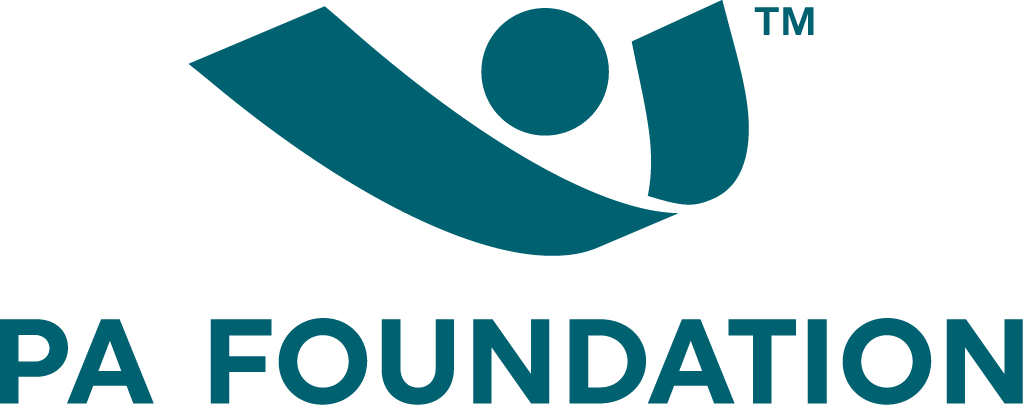Women in Philanthropy Panel Discussion Centers on Women in the Job Market

In late May, Women in Philanthropy led their meeting with a rich panel discussion on the topic of PA Women in the Job Market. Moderated by the committee’s new chair, Agnes Compagnone, MS, PA-C, and driven by three panelists – Noel Smith, MA; Andrea Lowe, MBA, MHA, PA-C; and Rev. Josanne K. Pagel, M.Div, MPAS, PA-C, DFAAPA, Karuna®RMT – the discussion focused on gender differences in the job market, employment resources, and assessing job priorities.
This discussion is particularly important for women because data shows that they are more likely to stay in unhealthy work situations, says Smith, Senior Director of PA and Industry Policy and Analysis at the American Academy of PAs (AAPA). “Remember to seek out that joy,” she adds. “It’s okay to shift, to change, to find a mentor, to make a move. [This is] a really flexible profession.”
The Gender Wage Gap
According to pre-COVID data broken down only by gender, PAs who are women are more likely to make 85 cents on the dollar compared to PAs who are men. This statistic improves to 93 cents on the dollar when including compensation-related factors, such as women being more likely to work part-time and less likely to be in leadership positions. The bottom line, however, is that female PAs often make less money than their male colleagues, a trend that is seen across many fields.
“We, as the PA profession, are doing relatively well compared to other professions, [and] that’s the good news,” Smith says. “The bad news is that we still have a gender wage gap.”
To address this, the Cleveland Clinic Health System in Ohio focuses on setting salaries based on job responsibilities. For example, PAs who work longer hours, including weekends and holidays, and perform special surgeries would be in a more advanced compensation category. “That’s a higher salary range regardless if you’re a man or a woman,” says Pagel, Executive Director of PA Services at the Cleveland Clinic.
For other health systems that want to address the gender wage gap, Lowe, director of employer strategy at AAPA, advocates for creating a structure in which PAs report to PA leaders. “If there’s not a leader at the table, then all the best practices do not happen, and that’s when I think we start to see the gap widening,” she notes.
Knowing When to Move On…and Up
PAs who don’t feel challenged at work may want to reevaluate and look for positions that offer more opportunities for growth, says Lowe, who also leads AAPA’s diversity, equity, and inclusion initiatives. “You have to create those environments and surround yourself with people who want that for you,” she adds. “That makes a huge difference.”
Pagel says the question may not be when it’s time to move on, but when it’s time to move up. When she has management positions open, she will call PAs within the Cleveland Clinic system who she thinks would be a good fit and encourage them to apply. “If we’re looking at really enhancing women in leadership, I think [moving up] is the key,” she says.
Getting Your Dream Job
For PAs who are in the job market, Lowe’s first piece of advice is to “know thyself.” PAs should look inward and assess what they want from their job, such as work/life balance, a certain schedule, or advancement opportunities.
To help with this soul-searching, Pagel suggests a three-column exercise, both at the beginning of the job search and periodically thereafter. In the first column, PAs can write down what they need most from their work. For example, they might need to pay off student loans, and make that the priority. Then in the second and third columns, they can focus on what they would really like in their career and what their dream job would look like. This exercise helps PAs see where they want to start and where they ultimately want to go.
From there, Lowe suggests three resources to help with the job search. AAPA recently launched its Areas of Practice Guide, a valuable resource for PAs who want to learn more about particular specialties, compare salary data, and read insider accounts from colleagues. In June, AAPA unveiled PA JobSource, a directory of 400-plus PA positions across the country. The organization also offers many CME courses on a variety of topics; a particularly relevant course is called Becoming the Self-Aware Self-Advocate, which focuses on helping PAs find their voices in salary and job negotiations and navigate their professional life.
These are great tools in helping PAs understand their worth and what they want to do, Lowe says.

